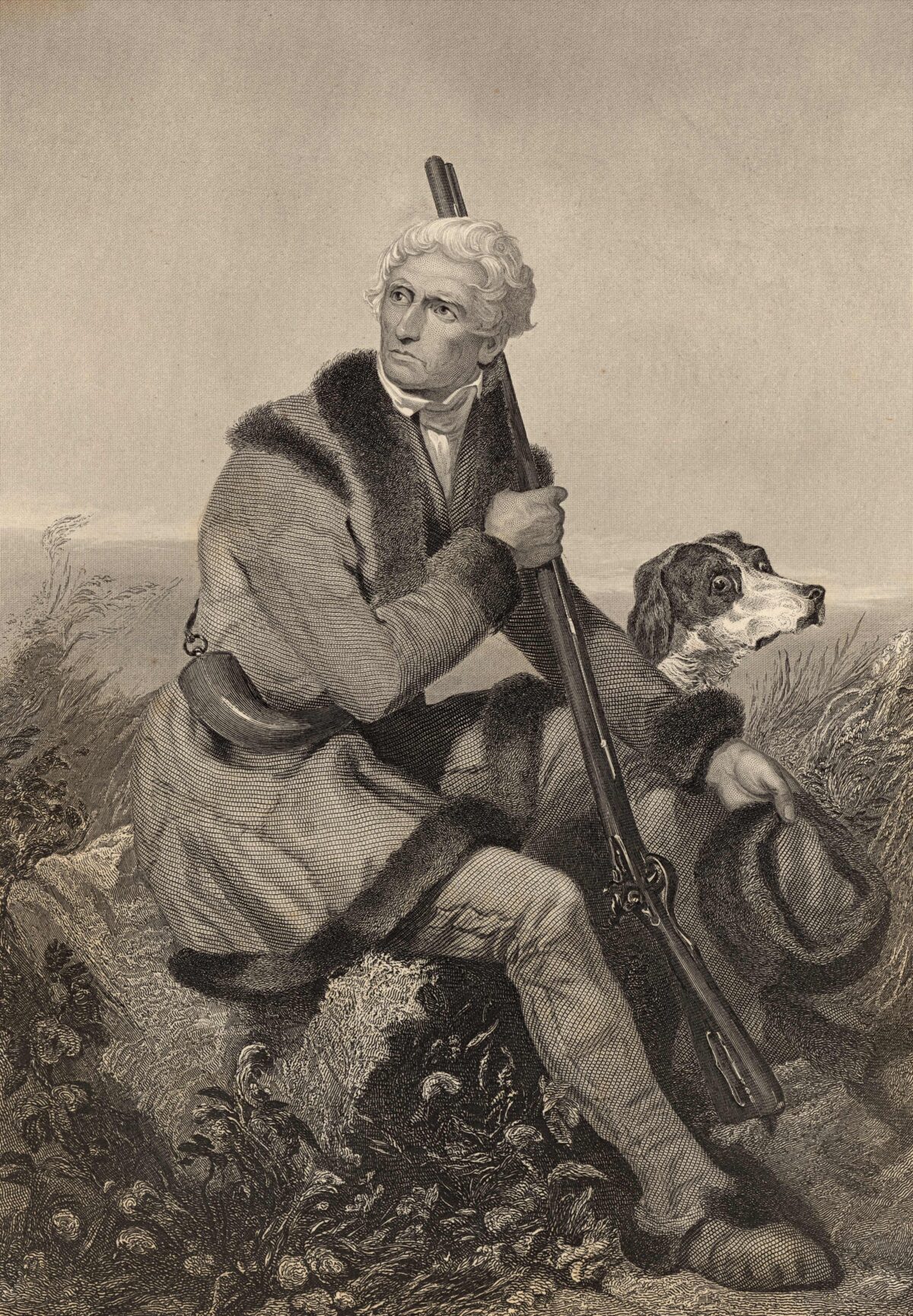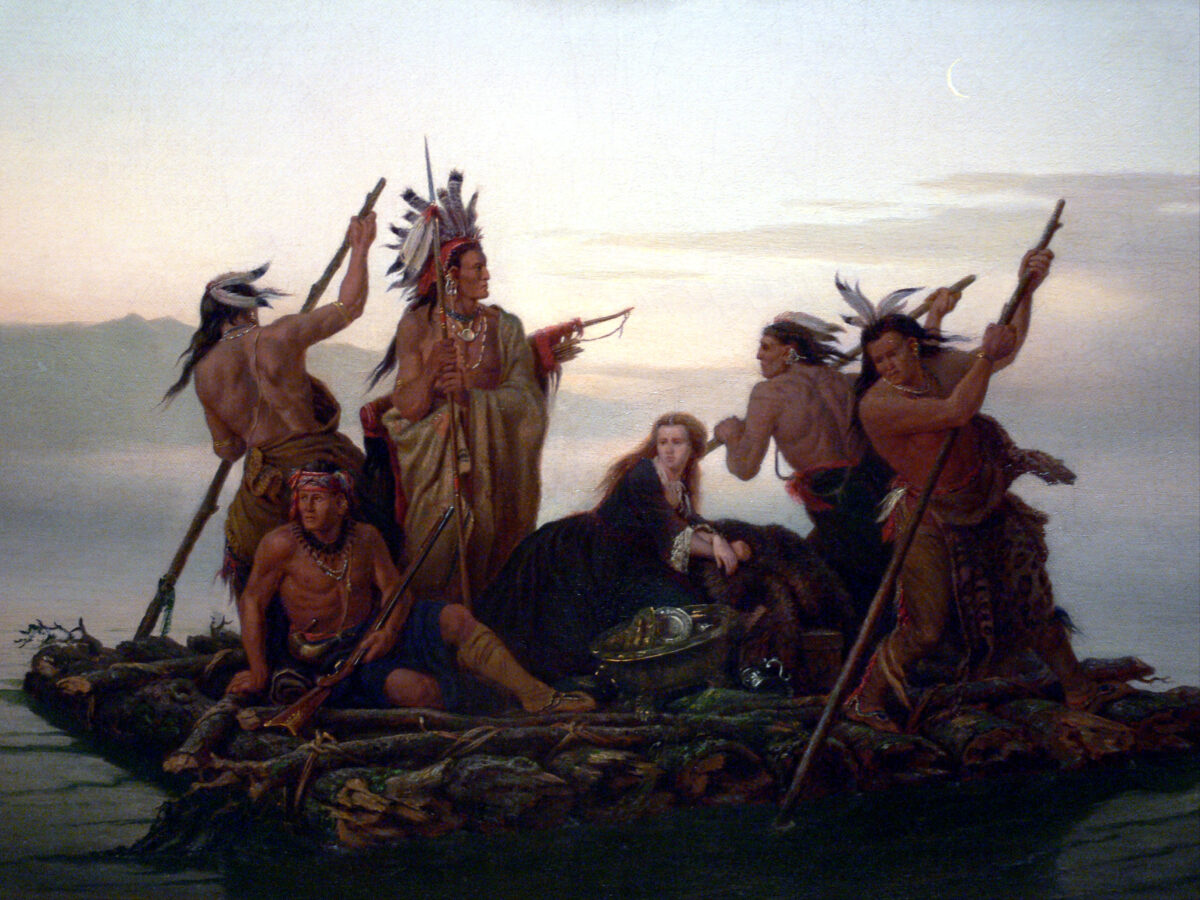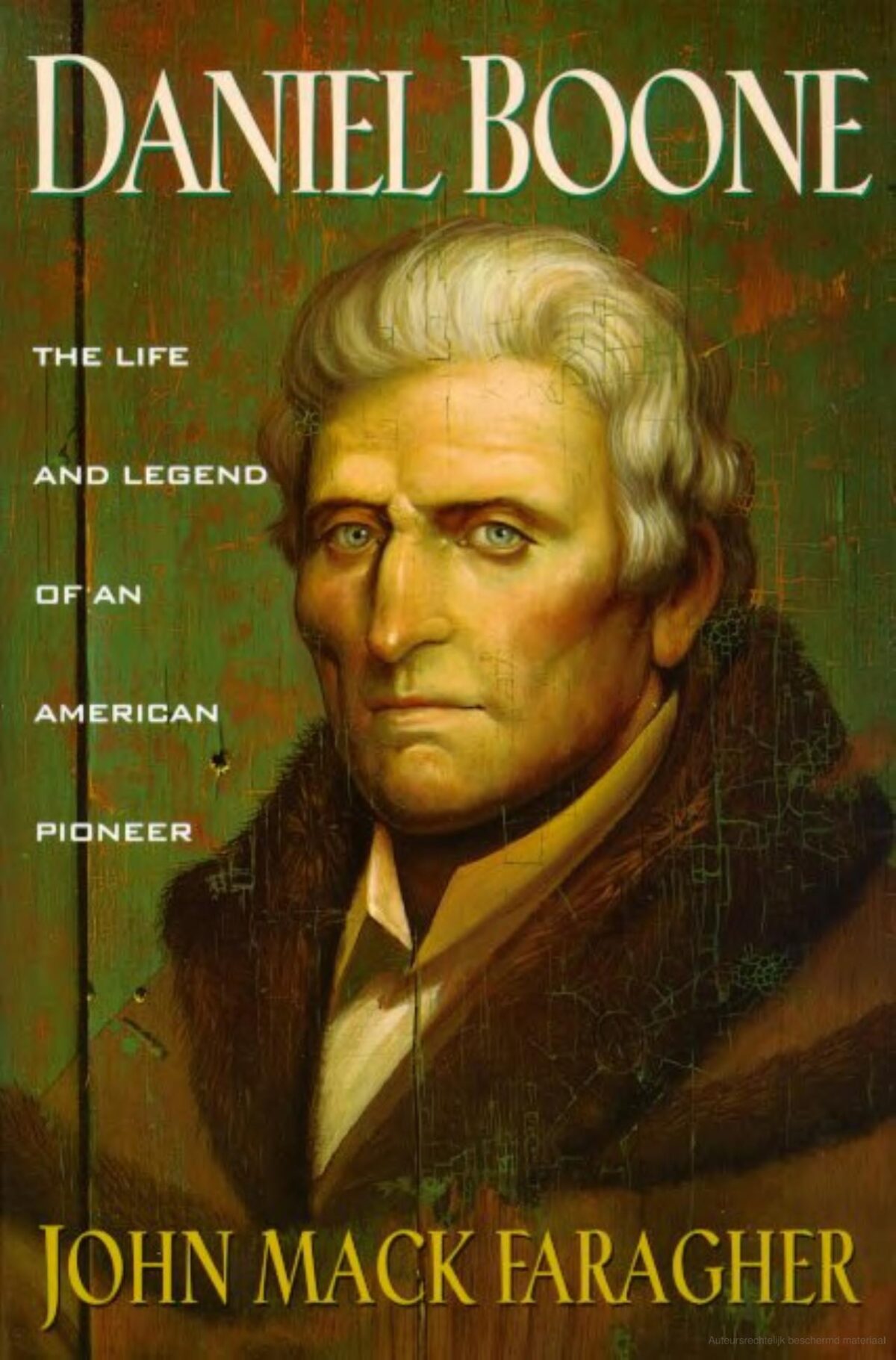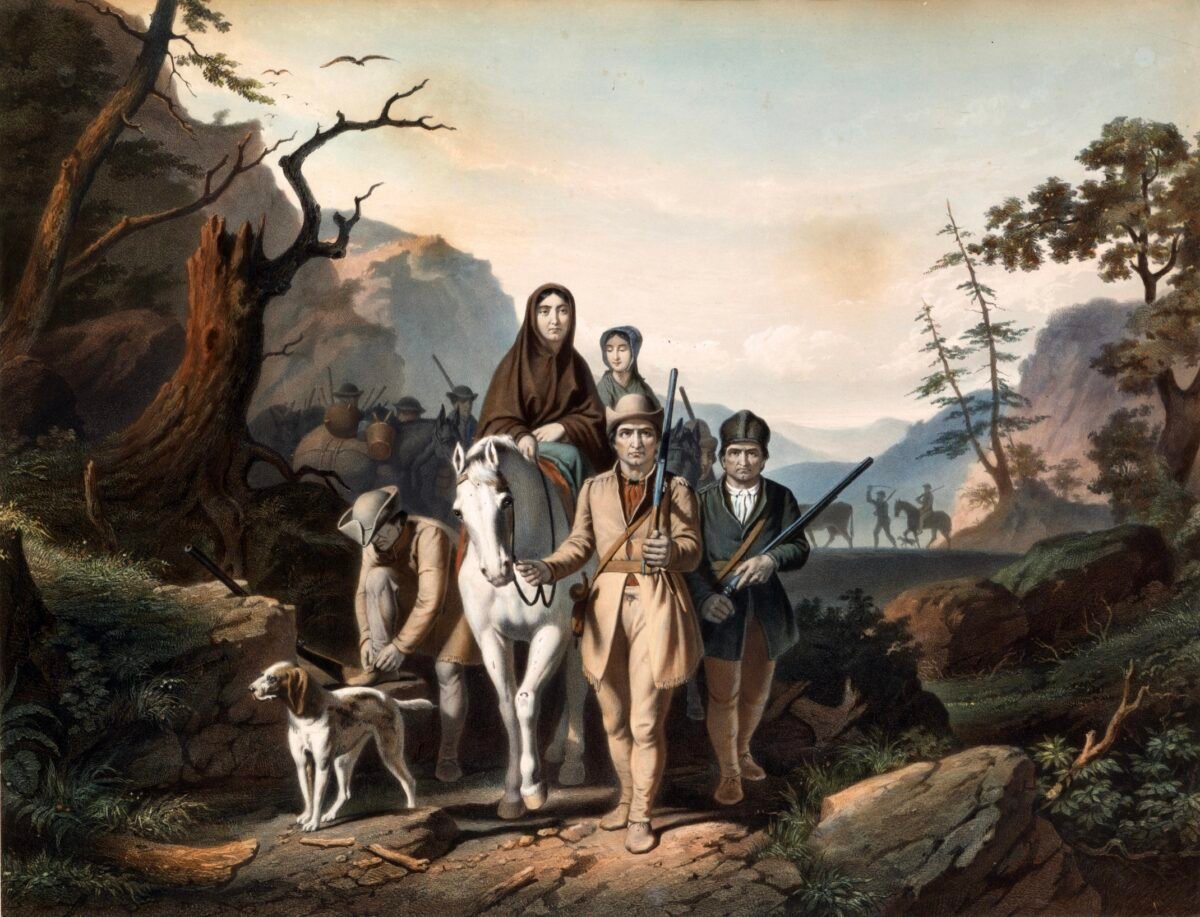The American Folk Hero Who Blazed a Path West to Kentucky
In “Daniel Boone: The Life and Legend of an American Pioneer,” biographer John Faragher describes the 18th-century author John Filson as the stereotype of a “pedantic schoolmaster, a character perfected in Washington Irving’s portrayal of Ichabod Crane”—referring to the protagonist in the short story, “The Legend of Sleepy Hollow.” In 1783, Filson migrated to Kentucky, where he was speculating in land. There, he wrote a book containing a description of the land, a detailed map, and an account of one of the settlers he met, explorer and pioneer Daniel Boone. “The Adventures of Col. Daniel Boon” made Boone famous internationally. The book remains in print today.
The Man in Brief
Born in Pennsylvania, Daniel Boone (1734–1820) spent his adolescence hunting in the fields and forests around the family farm. Early on, he developed the outdoor skills that he would use and hone for the rest of his life. He received a rudimentary education from family members, and so, unlike many of the hunters with whom he would spend so much of his life, he was able to read and carried books with him into the wilderness.

When Boone was 15, the family moved to the Piedmont region of North Carolina, settling in the Yadkin River Valley. Disliking farm life, he became a hunter, traveling through what was then the western wilderness and returning home with animal pelts for sale. In 1755, he served as a wagoner with Maj. Gen. Braddock’s ill-fated expedition, survived their disastrous encounter with the French and Indians, and returned home to marry Rebecca Bryan and continue his “long hunts,” tramps which took him as far south as Florida.
In 1769, a visit with an old acquaintance, John Findley, revived Boone’s interest in the storied and largely unexplored land across the mountains, Kentucky. For the next 30 years, Boone’s life was intertwined with that state. He explored its woodlands, befriended and fought Indians, brought his family across the mountains, assisted with the purchase of vast tracts of land from the Cherokee, helped cut the Wilderness Road through the Cumberland Gap, and founded and fortified the settlement of Boonesborough. During the British and Indian frontier raids of the American Revolution, he led the settlers in several engagements, was once captured and adopted by the Shawnee chief, Black Fish, and served for a time in the Virginia Legislature, which at that time still claimed Kentucky for its own.
For many years after the war, and despite the renown brought him by Filson’s biography, Boone struggled financially, losing out on land deals and trying to earn a living from surveying and keeping a tavern. In 1799, he finally gave up on Kentucky and headed west to Missouri, where he lived out the rest of his days, hunting, telling tales to his admirers, and grieving the loss of Rebecca, who died in 1813.

Complexities
In the final pages of his Boone biography, John Faragher examines at length the controversies that have long surrounded this American hero. Boone was scarcely in his grave when both myth-makers and detractors went to work, with the former imputing to him impossible deeds and ambitions—one early biographer “used Boone’s life to illustrate God’s progressive plans for America”—while the latter decried him as a charlatan or as an entrepreneur seeking to open the Kentucky wilderness for personal gain. James Fenimore Cooper clearly modeled Natty Bumppo in his Leatherstocking tales on Boone, while others depicted Boone and men like him as “bragging, fighting, Indian-hating frontiersmen.”
Faragher’s lengthy and fascinating analysis of the impact of Boone on biographers and storytellers is invaluable for our understanding of history and people. By this examination, he reminds us that all human beings are complicated creatures, constituting within themselves a wilderness that others can explore but never fully know. Faragher’s subtitle to his book, “The Life and Legend of an American Pioneer,” fulfills its promise to readers by giving us the facts of Boone’s life, his accomplishments and failures, without neglecting the impact his reputation left on the American character.
The Legacy
Some of these facts of Boone’s life are irrefutable. Despite the carping of critics, Boone did indeed play a major role in opening up Kentucky and the lands beyond to settlers eager to stake their claims and build a life for themselves. In the years after the Revolutionary War, they emigrated by the thousands through the Cumberland Gap, most of them seeking farmland and a place to call their own.
But Boone left a far greater mark on the world’s newest republic. In those decades when the Constitution was born and along with it the American Dream, founders like George Washington, Thomas Jefferson, and John Adams became heroes to their countrymen. Washington in particular embodied the republic’s perception of itself as “a new order of the ages.” The multi-talented Benjamin Franklin put another face to Americanism—a Yankee sparkle and inventiveness that became embedded in our character as a people.

Daniel Boone appealed to a different group of Americans. He became the folk hero of the common man. Like them, he had lived in hand-hewn cabins, hunted meat for the table, and relied on common sense and daring to survive the rigors of the wilderness. Like them, he valued and loved his wife and children. And like them, he looked to the west for what he called “elbow room.” Those people braving the frontier hailed him as their hero and one of their own.
One incident in particular reveals this bond. In 1776, a small party of Indians abducted Boone’s 13-year-old daughter Jemima and two friends. The girls’ screams raised the alarm, and Boone immediately formed a party to pursue the kidnappers. They tracked them for three days, ambushed them in their camp, and freed the girls. This is the man—decisive, cool, and courageous as he rescues his daughter and her friends—who struck a chord with others heading west.
Americans have long celebrated Boone in books, art, and movies, and in a popular television series. But the most succinct image of the man occurs in Stephen Vincent Benét’s short poem, “Daniel Boone”:
When Daniel Boone goes by, at night,
The phantom deer arise
And all lost, wild America
Is burning in their eyes.
That same wild America blazed in the heart and the eyes of Daniel Boone.
This article was originally published in American Essence magazine.




